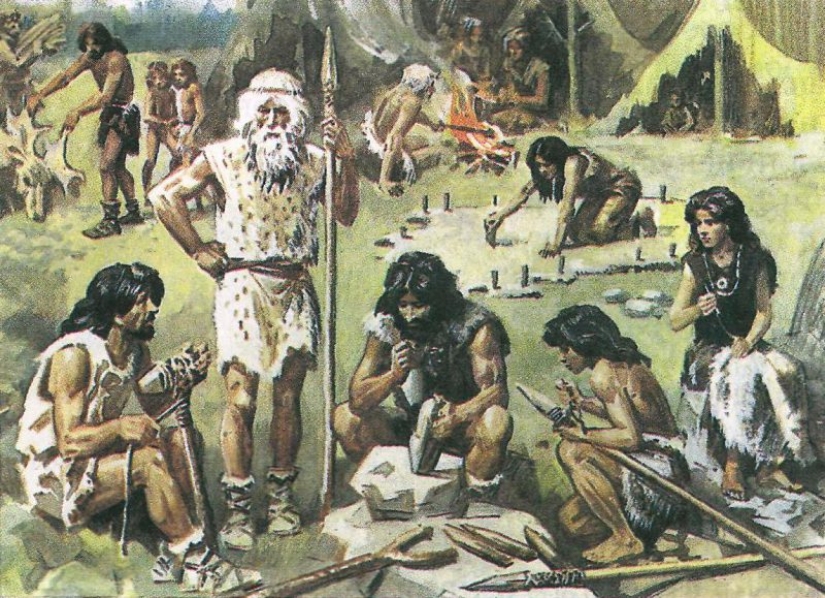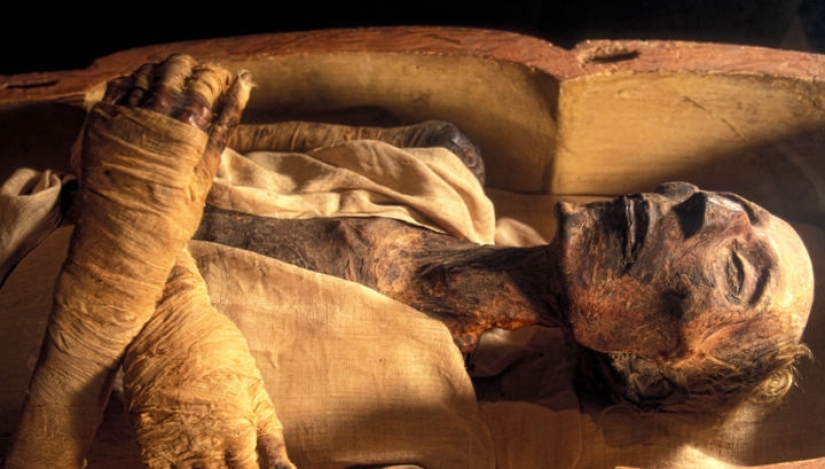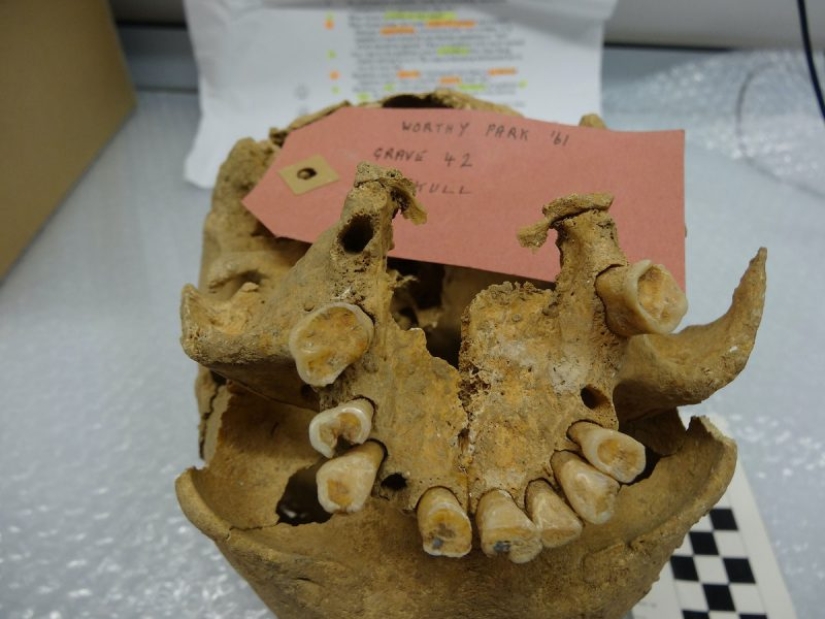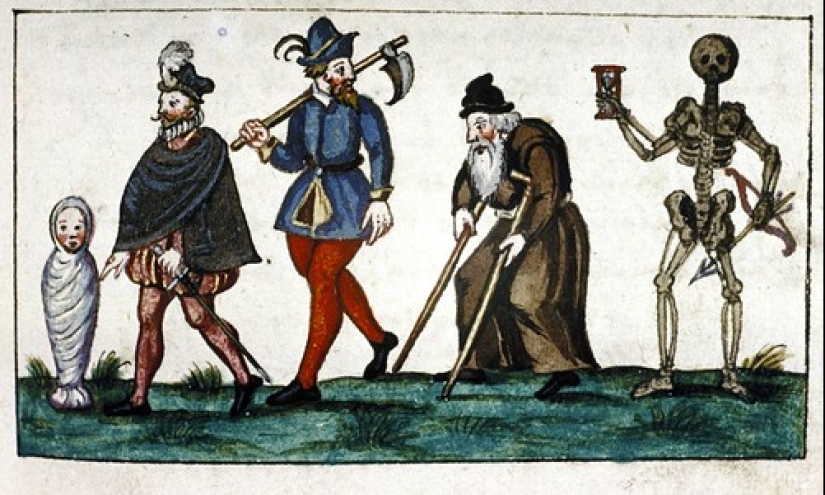Young and old, or How long people actually lived in ancient times
For many years, we were taught that even in the 19th century, a person was considered an old man at the age of 30, and life expectancy was almost half as long as today. Modern research has shown that this is a misconception and is caused by a misinterpretation of statistical data. We will tell you how long people actually lived in ancient times and where the information about the short life of our ancestors came from.

When we hear about the average life expectancy, we often misunderstand this term. In fact, we need to talk about the average life expectancy, which can not correctly tell how long people lived in past epochs.
It's all about the high infant mortality rate, which claimed many lives in the first half of the 20th century. It was she who spoiled the overall average duration, making it frighteningly low. Scientists say that in the Paleolithic era, the average life expectancy was 20 years. But did this mean that a Stone Age man in his 20s was a decrepit old man standing on the edge of eternity?

Of course not, and it is again a matter of child mortality, which was particularly high in the first years of life. Having lived up to 5 years, the ancient man could well count on another 30-35 years of life. Paleoanthropologist Eric Trinkaus examined the remains of people from the Paleolithic era and determined that most of them belong to men and women who lived from 20 to 40 years. At the same time, a quarter lived even more than 40 years. Interestingly, Neanderthals and Cro-Magnons died at about the same age.
Scientists say that even 40 years is not the limit for people of the Middle Paleolithic era. Many ancient people could have lived much longer, but the elderly were ill-equipped for the constant pursuit of food. The remains of old people are often found at the sites of parking, which suggests that they simply lagged behind their young tribesmen and died of starvation or fell victim to predators.
It may seem incredible, but modern representatives of hunter-gatherer tribes living in remote parts of the world live no less than the average Russian or Ukrainian, despite the harsh life and lack of medicine. Anthropologists Michael Gurven and Hillard Kaplan have spent a lot of time researching the Hiwi (Venezuela and Colombia), Yanomamo (Brazil), and Hadza (Tanzania) peoples. All these people don't even have clothes and primitive tools, but they live long enough. The Pakistani Hunza tribe, which lives in very spartan conditions, is known for its 120-year-old residents.

At birth, the life expectancy of representatives of these peoples does not exceed 35 years, and this is again a consequence of the huge infant mortality. But having managed to live only up to 3 years, representatives of modern primitive tribes get an excellent chance to meet old age and reach 70. In the countries of the former Soviet Union, child mortality is now no more than 1%, but at the same time, not everyone lives to 70.
Representatives of most ancient civilizations also had a life expectancy of about 30 years at birth. In ancient Rome, Greece and Egypt, at least 30% of children died in the first year of life. A resident of Rome, Athens or Corinth, having reached 15 years, could well live another 40, or even more. Yes, these are average figures and there is every reason to believe that the well-off people of that time lived even longer.

The Mummy of Ramses II
The ancient Egyptians, who loved accounting and order in records, left a lot of documentary evidence about the life expectancy of their pharaohs. From their sources, we can learn that Pepi II Neferkare of the 6th dynasty died at the age of 68, Thutmose III (18th dynasty) lived for 56 years, and Ramses II (19th dynasty)-and completely passed away in 90.
Of course, it would be possible to assume that the Egyptian scribes lied out of flattery, but this information is confirmed by modern researchers. Professor Michael Zimmerman of the University of Manchester performed autopsies on more than 300 Egyptian mummies from different eras and, according to him, many of his "patients" passed away in the 80-90 years. At the same time, they had a solid baggage of ailments, such as diabetes, arthritis and osteoporosis.
Military sources also confirm the high life expectancy in the ancient world. In the cities of Hellas, men between the ages of 18 and 60 were called to war, which means that in their seventies, the ancient Greeks were strong enough old men to hold a sword and shield, ride a horse, and walk long distances on their own two feet.

Socrates took poison at the age of 70
There were long-livers among the famous personalities of ancient Greece. Pythagoras died in 75, Hippocrates, Democritus and Sophocles in 90, and Xenophanes, in general, lived until 95. In Rome, things were no worse — the first emperor Octavian Augustus lived to 75, and his successor Tiberius-to 77. At the same time, Tacitus suspects that the latter did not die entirely of his own free will, but was poisoned or strangled to make way for Caligula.
Relatively close to us in time, the Middle Ages left a huge array of information about people's lives. An archaeologist from the Australian National University, Christine Cave, has closely studied the length of the earth's journey and the causes of death of people who lived in the early Middle Ages.

In addition to the records, Cave studied the remains from three English cemeteries from 475-625 and, using a new method of determining the age by the degree of tooth wear, determined that many people who had crossed the 70-year mark lay in the graves. Ukrainian researchers, having studied the Kiev burials, found that in the Middle Ages, a resident of the city who celebrated 20 years, could well expect to live at least as long.
Among the medieval English nobility, there were many long-livers. In the 13th century, an aristocrat who was 21 years old could live on average for another 43 years. But in the 14th century, this figure fell sharply to 24.5 years, thanks to the "black death" that came to Europe. In the 15th century, relatively prosperous in terms of epidemics, at the age of 15, a young man could count on another 48 years of life. It turns out that the medieval aristocrats lived for about 70 years.
Commoners on average lived less than nobles, but the difference was hardly very critical — at that time, the main thing was to survive the first few years of life. As in the Ancient World, in Europe of the Middle Ages, up to 30% of babies died. In England of the 13th century, 650 out of 1000 children lived to the age of 10, 550 to the age of 30, and 300 to the age of 50. In 75 and later, 70 out of 1000 died, which, you will agree, is very good.

It turns out that at all times in the world there were enough centenarians, and not only from among the elite, but also from ordinary people. I survived my childhood years-so the chance to live to old age is quite high.
Keywords: Anthropology | Archaeology | Greece | Centenarians | Longevity | Research | Rome | Plague
Post News ArticleRecent articles

Sometimes you see a tattoo on a person and think: "Why did he do it at all?". A familiar feeling? If you have never experienced it, ...

Taxi ride like a lottery — you never know if you will pull the winning ticket. Even the official services like Uber does not ...
Related articles

Among the Russian who migrated to the North, there existed legends about the mysterious people of the white-eyed Chud, who was ...

It is believed that the Russians are a nation that is quite homogeneous in its anthropometry and genetics. Residents of different, ...

Historians believed that during the Bronze age, Northern Europe was a backward region. However, findings on the German river ...

Finnish photographer Juha Tanhua has shot an unusual series of "space photos". Astrophotographic images of stars, galaxies and ...